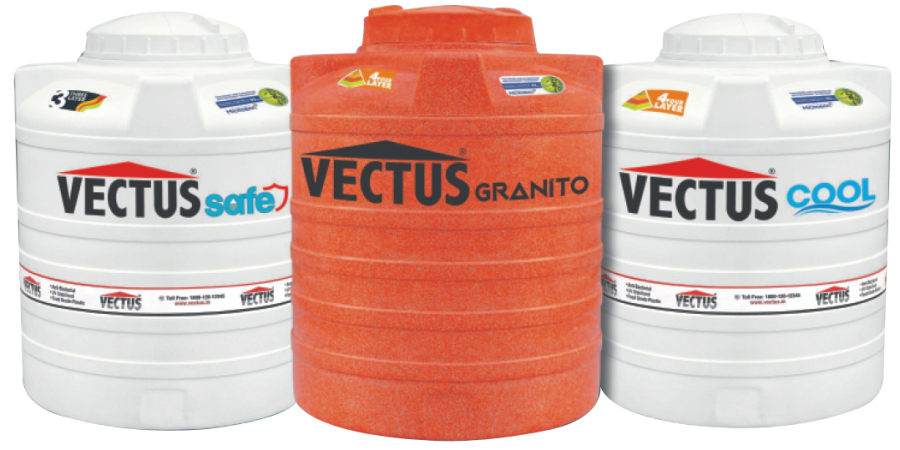A water tank holds your water for the most prolonged duration of time. Be it for drinking, irrigation, or agriculture. Top brands create storage tanks concerning three essential parameters – the design, lining, and construction material. Usually, a water storage tank is kept outdoors. Thus, it is exposed to weather extremes such as storms, wind, rain, etc. Furthermore, environmental stress makes them prone to pests, bacteria, and dust. Therefore, it is essential to select the right water storage solution.

Which is the Best Tank Material?
Different construction materials are used to construct tanks for various purposes. Some commonly used materials are plastic, fiberglass, concrete, steel. Each has its perks and demerits. The traditional concrete tanks require a lot of maintenance. Moreover, they often have algal blooms that make the water unfit for human consumption.
Plastic Water Tanks
Recently, plastic has been the most popular water storage tank material in recent times. The primary reasons for plastic preference are:
- Smooth texture: This texture makes it easy to clean. Additionally, it ensures optimal flow rates.
- Lightweight: The lightweight enables easy transportation and installation.
- Cost: The cost of plastic water tanks is considerably less than steel, fiberglass, or concrete.
- Hygiene: It is essential to maintain the optimal water quality in the tanks. This predominantly affects the choice of the water tank. Simple tanks require a lot of effort for regular maintenance of stored water.
The multiple layer technology provides germ-free, pest-free water storage. Top brands manufacture water storage tanks with several layers.
Why do Water Tanks have Multiple Layers?
The main reason for introducing multiple layers in a water tank are:
First, it curbs the hassle of maintenance whichhelps to shorten the service intervals.
Most importantly, multiple layers ensure the longevity of the water tank. In addition, they help the tank bear with adverse environmental stress such as storms and accidents.
Multi-layered Tanks and Their Outshining Benefits
Today we have several tank varieties. Here are the key benefits:
2-layer tanks: Plastic tanks come with two layers of insulation. The primary layer, which is the outermost layer, is strong, durable, and resists abrasions. The second layer protects the tank and its water against UV exposure.
Triple-layered tanks: The three layers of the tank protect against UV rays and make it durable. Also, these tanks have enhanced leak-proof ability. In addition, they are strongly resistant to rust and corrosion.
4 layer water tank: These are a bit more expensive than the other types. However, the price is worth the qualities. These tanks have an anti-microbial layer. It protects the water against viruses, bacteria, and fungi. Additionally, they have a layer of polyurethane foam. This layer maintains the temperature of the water and increases the structural resilience of the tank.
5 layer water tank and 6 layer tank: Some top brands have introduced 5 and 6 layer water tank with cutting-edge technology. These tanks are highly durable. In addition to the UV protection layer, it has an anti-bacterial layer which eliminates bacteria by 99.9%. This property of inhibiting the growth of microbes extends the expected lifetime of the water storage tank. Also, it has six foam layers. These layers keep the water safe from external temperatures. Thus, it becomes resistant to external temperature variation even when it reaches extremities.
Disadvantages of Single Layered Tanks
For decades, single-layered tanks have become less popular due to increasing awareness about the harmful UV rays. These tanks consist of a single layer of HDPE and are not UV stabilized. Therefore, these tanks do not protect the water tanks from ultraviolet rays. This results in algal growth inside the tank.
Water hygiene should be the primary concern of every individual, and multiple layer technique ensures the same. Thus, 5 layer and 6 layer water tanks are prevalent. So, stand out of the crowd without compromising on water’s purity and safety standards. Pick from the vast range of available products and, most importantly, choose the right brand.